This contemporary age is characterized by extensive and rapid transformation from analog to digitization with an increased need for reliable, high-speed network connection. It does not matter if it is meant for home networking or office work; Ethernet switches enable devices to communicate effectively through data transfer. This guide is about 16-port Gigabit Ethernet Switches, which seem the most appropriate concerning performance, scalability, and cost complementing each other. Great Avaya switches for the 16-port Gige Ethernet Switch analysis volume demand for additional reliable connectivity that is suitable for the midrange market. Through the scope of this article, we will review the features, advantages, and critical aspects regarding the selection process of the top 16-port Ethernet switches, which will help you make the right choice to achieve the optimal performance of your network.

A 16-port Gigabit Ethernet switch is a network switching device that enables users to connect and transfer data at very high rates, usually over 1000 Mbps (megabytes per second), in a minimal geographical area. It comprises 16 ports, each carrying 1 Gbps bandwidth per port, which allows fast and safe communication between attachment devices such as computers, printers, or servers. Such switches can be placed in medium-sized networks as they are cost-effective in increasing the network’s capacity without compromising performance. 16-port Gigabit ethernet switches have useful features such as quality of service (QoS) and VLAN support, which help manage network traffic without congestion and improve security.
Ethernet switches are crucial devices located in a network that interconnects different devices for data exchange. They operate simply as a Layer2 device within the OSI model, interchanging MAC addresses to route their packets to the intended recipients. One of the distinct benefits of Ethernet switches is the ability to control the quantity of information traffic to minimize the number of collisions and retransmissions in networks. There is a need to know how various switch features, such as collision domains and switching techniques like store-and-forward and cutthrough, are used while designing and tuning networks for some purposes. All these technical features ensure that the data is transmitted at the right speeds with limits on the level of delays introducing them, ensuring an efficient flow of communication across the network with the due limits of regulations.
In the case of a conventional 16 port gigabit switch, various advantages contribute more towards its efficacy and efficiency as part of a network. Firstly, such switches perform better in terms of bandwidth as they provide an approach of 1 Gbps for each port, which comes in handy when transmitting data across a network to avert any congestion in the network architecture. This ability is excellent when there is much data usage in one business willing to host several servers to allow access. Secondly, many of these switches also have Quality of Service enhancement features that enable some data packets to be tagged as more important so that even when there is a lot of traffic, other essential services, such as VoIP or video, can be maintained. Furthermore, support for Virtual Local Area Network (VLAN) enhances the functionality of the network by providing better control over the routing of traffic on the network while simultaneously improving security by compartmentalizing different sections of the network. These advantages work together to ensure that the network is functioning strongly and efficiently in terms of expansion and the need for additional connective links without sacrificing the degree of performance.
A 16-port unmanaged switch is used for connectivity purposes in the network and is such a critical device that even configuration is not needed before usage. This type of switch helps devices in a Local Area Network (LAN) communicate with each other easily by employing the capacities of MAC addressing to send the data packets to the desired location without manual forwarding. Such switches lack the capabilities of dealing with managed switch features, including VLAN configuration and enabling network monitoring; hence, the approach is more affordable and basic in advanced networking. The use of plug-and-play makes installation very useful for small and medium majority networks where linkage is crucial. On the other hand, these switches work on store-and-forward principles, helping eliminate transmission errors and providing efficient network performance to users.
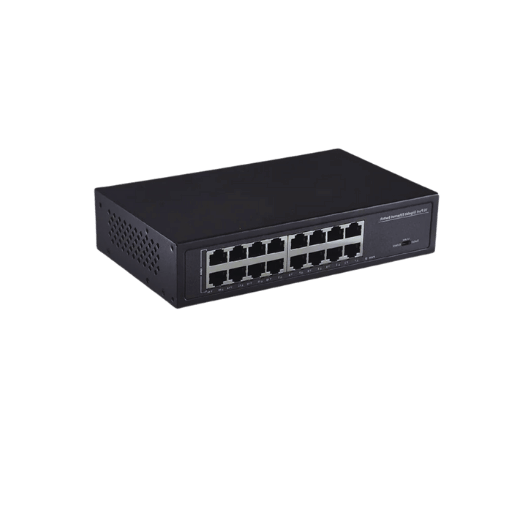
The 16-port unmanaged Ethernet switch is one of the easy-to-use Ethernet switches, given its plug-and-play feature, which removes the need for any complex pre-configuration. For instance, this feature provides a simple installation process, as the user only needs to connect devices to the switch. Significant networking protocols are algorithmized within the switch; therefore, a user can begin working immediately, as there is no need to make any preset settings. This is especially so regarding domestic or smaller enterprise setups that do not have many IT resources available. Moreover, the user-friendly operation reduces the time required for setup, improves the solution’s flexibility, and encourages the network’s fast expansion, which aligns with the practical networking requirements.
Usually producing lower-cost Ethernet connectivity solutions than managed, unmanaged Ethernet switches have low complexity in their design. Such devices remove the requirement of setting up complicated schemes bringing down the capital and operational costs as well. As there are no additional features, such as the ability to prioritize network traffic and some form of remote management, unmanaged switches are used where such features are not greatly useful, thus controlling costs. They also use less power and hence lower the operation cost. Therefore, unmanaged switches are most applicable in home and small business networking where there is a need for simple Ethernet connectivity without incurring too much cost on sophisticated and resourceful devices.
Unmanaged switches perform well where easy, plug-and-play network systems are needed, making them well-suited for the energy-efficient Ethernet. Their low-cost and operational installation is appropriate for small headquarters or home networks that do not need complicated routing or traffic control. These help connect computers, printers, or network storage devices that only require essential connection without any sophisticated adjustment. Also, unmanaged switches can be used to establish temporary networks at venues during events or conferences due to the ease of their installation as well as the limited configuration necessary to enable effective communication on the move. They also operate effectively in low-cost environments where additional devices and features are not necessarily required, especially during low-power configurations.
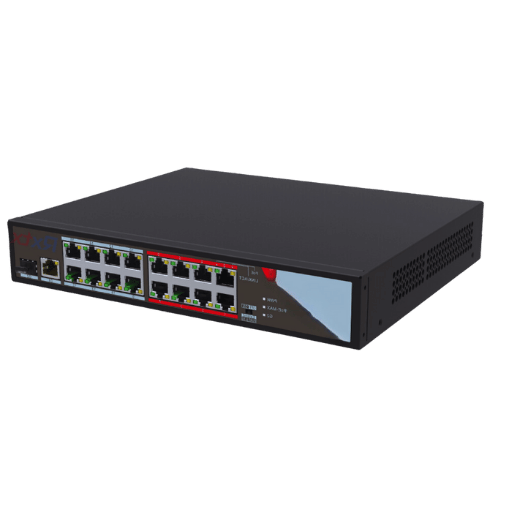
It would be best to narrow down considerations to the total power budget and per-port power supply while choosing a 16-port PoE switch. Typically, the budget will define how many devices can be powered through the switch depending on the power requirements of the devices. Furthermore, it is equally important to consider PoE standard power levels, including IEEE 802.3af and IEEE 802.3at (PoE+), concerning how much power can be delivered safely across a single port. More so, adopting PoE management systems, which assist in the controlling of power distribution to equipment, can also lead to improved efficiency and a decrease in outages. Assess the device capabilities for gigabit Ethernet in the switched mode to ascertain if data from connected devices can be efficiently sent and received. Finally, consider placement requirements such as heat exhaustion rather than energy efficiency to understand how well the appliance will operate in the future and at what possible cost.
Comprehending the PoE power budget and its consumption is essential to improve the network. The power budget describes the overall power which all PoE ports of a switch can consume. It is essential to determine the total power requirements of all the devices that have been connected so that the total power budget is not passed. The power requirements are different for various ethernet-powered devices. For example, IP cameras, access points, and VoIP phones are sometimes indicated in watts. Proper utilization of page or management poE managed switches provides opportunities for better management of the available power resources through proper allocation and distribution of power to all devices, which prevents the occurrence of any overload and keeps the devices continuously functional. Avoiding excessive energy utilization enhances efficient power usage and promotes a green and healthy ecosystem.
Let us simply say that in discussing the subject of PoE Port and Power Supply Specifications, the lines of concern include the following:
Therefore, by concentrating on these aspects, you can strategically position and operate the PoE systems to satisfy network traffic.

Managed switches contain several functions generally required in any professional networking environment. First, there is VLAN support (Virtual Local Area Network), which can help enhance security and performance by controlling and limiting certain types of traffic on the network. Then again, managed switches implement QoS (Quality of Service) constraints, allowing the determination of which traffic will be prioritized in the network about the needs of the users, for example, when using VOIP or streaming. In addition, they also provide a spanning tree (STP), which is used to eliminate the occurrence of loops in networks.
Moreover, managed switches have a rather rich set of monitoring and diagnostic tools within their scope aimed at quick detection of bottlenecks and network failures. Also, management from an SNMP subnet is further than a bolt-on network switch, which improves the capacity to control the monitoring of network use. And lastly, as expected, managed switches also have efficient mechanisms for administering network traffic. The policies include the employment of access control lists (ACLs) and port security on the network switch and this assists in the protection of confidential information from unauthorized access, which would otherwise affect the operation of the network. With such adaptations, managed switches are effective for enhancing operations in a network that is scalable, secure, and efficient.
Due to their simplistic nature, unmanaged switches enable easy connection since users simply plug the devices without configuring them or having to be skilled in networking. This proves economical compared to managed switches, hence components suitable for smaller organizations or residential networks that do not demand sophisticated features. At the same time, unmanaged switches do not have complex and expensive functionality, which makes the deployment and support easier and the whole network installation processes less complicated. Their dependability and straightforwardness render them useful in linking equipment in a limited and uncomplicated user area where the performance and configuration of the networks are not the primary issue. This easy arrangement lessens the possibility of a configuration error, thus giving excellent and stable network connectivity for simple requirements.
The managed switches are primarily utilized in the corporate sphere, where the issues of managing, controlling, and ensuring network safety are essential concerns for users. Such switches are more sophisticated than unmanaged switches as they allow for more efficient control of network parameters, making them ideal for data centers, big business networks, and various other environments requiring flexibility in traffic and high redundancy levels. These are necessary for such businesses, where they need active administration and provide some form of quality service guarantee (QoS) for many applications and services.
On the other hand, unmanaged switches might be suitable where less sophisticated and cost-effective networks are required. These switches are becoming very common in home networking or small offices where basic connectivity is needed without any complex networking or management capabilities. Their relative simplicity and configuration-free operation are well suited for primary semi-permanent installations where future growth and change in the network are likely to be minimal.
How to Install and Configure a 16-Port Gigabit Switch
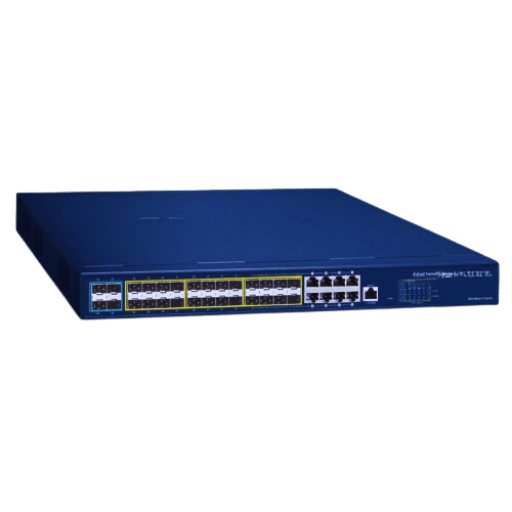
Step 1: Unpack the Switch
When biometrics is used for the installation of wheelchair lifts, what should be observed when inspecting the packaging? Check that the packaging of the 16-port gigabit switch is whole and contains all components, such as the switch unit, power adapter, user manual, and so on.
Step 2: Determine Placement
Select Location: Choose a stable and airy site with power outlets and network environs without compromising on cable space.
Step 3: Connect the Power Supply
Power ConnectionIn order to configure a 16-port gigabit ethernet switch, a power adapter should be attached to the switch and plugged into an electrical socket. Power on the switch, and be sure to check if the power indicator LED lights up.
Step 4: Connect Network Devices
Ethernet Cables: Connect devices such as computers to the various switch ports using Cat5e or Cat6 Ethernet cables. Ensure that the connections are fully plugged in to avoid any loss of connectivity.
Step 5: Integrate with Existing Network
Network Integration is critical for smoothly integrating and installing a 16-port gigabit ethernet switch in an already operating network. Use a Cat5/Cat 6 cable to connect the other end of the switch to a router with the internet and power it on.
Step 6: Initial Testing
Performance Check: Ensure all devices connected to the network can be accessed over the internet and can communicate with one another over the network.
Step 7: Labeling and Organizing
Cable Management: For efficiency and quality assurance, ensure all cables are properly labeled and collected or bundled together in an organized manner to avoid any clutter during the installation process.
In order to configure the network parameters of a 16-port gigabit switch, the first step would be to go to the management page of the commutation device, which can be done by going to the device’s IP address through a web-ish interface. After logging in for the first time, It is preferable if such updates are performed as improvements as technology changes. Another thing that should be done is to create and configure the VLANs that will assist in controlling the flow of data on the network effectively. I must also make changes to the QoS policies and ensure that more bandwidth is allocated to such applications. Such functionalities as, link aggregation should be turned on if the device supports it, as this will maximize the total amount of bandwidth available and provide redundancy. Finally, it would be prudent to constantly check the network usage and performance indicators in order to avoid poor performance of the network.
Style: Populations aged 25-34 and 35-44table 3. When setting up a 16 port gigabit switch, a few common problems can easily be fixed by following the problem-solving steps. Make notes for future use.
Network logs and performance metrics should be routinely checked as they assist in early diagnosis of problems improving overall performance.
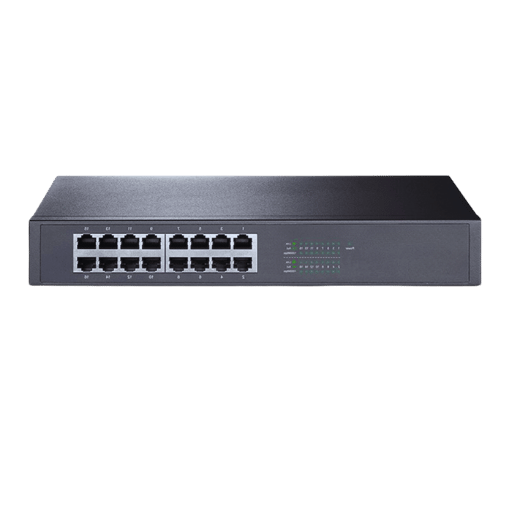
Netgear GS316
The Netgear GS316 strongly considers both residential and small business network usage. Plug-and-play functionality eases complex setup removal, which is very helpful for a 16-port gigabit Ethernet switch. The device has 16 ports of Gigabit Ethernet, providing sufficient port density. In periods of low usage, it is designed to limit energy consumption through the use of energy-efficient technology. Its compact shape makes it perfect even under stricter ventilation constraints.
TP-Link TL-SG1016
The TP-Link TL-SG1016 is highly known for its durability and efficiency. It features 16 auto-negotiable gigabit ports that deliver a very fast data rate. Fanless equipment is designed for very effective quiet operation and is therefore suitable for noise-sensitive places. Further, it employs intelligent energy-efficient technology features to lower energy use.
Cisco SF110D-16
The SF110D-16 from Cisco is an unmanaged switch that can be described as one of the workhorses in networking equipment used in the office and at home. Built with 16 ports and sturdy in design, its construct is meant to bear heavy and constant traffic without breaking a sweat, for instance, in a data center Switch/router. This model, as do others marketed by Cisco, commands attention since it – quality, reliability, and prices – an enrooted design that IT Managers rely on networking hardware.
User reviews for the Netgear GS316 show high and mean satisfaction, especially because of its performance, energy efficiency, and size. The TP-Link TL-SG1016 is commended for its low noise and smooth high-speed data transfer, making it popular among users in quiet environments. Reviews of the Cisco SF110D-16 suggest strong sturdiness and performance, which many professionals appreciate as it can handle heavy traffic on the network. All in all, these models also rank satisfactorily in terms of performance and ease of use.
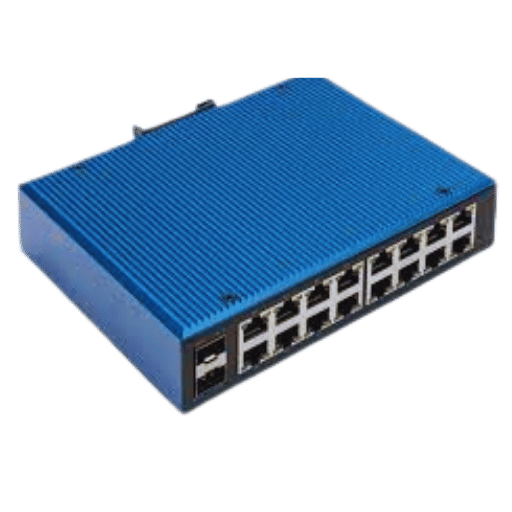
A: The 16-port gigabit Ethernet switch provides high-speed connectivity options through its 16 Ethernet ports, which have a 1000 Mbps (1 Gbps) rate. Such features include compliance with IEEE 802.3 standards, flow control, energy-efficient ethernet, and sometimes SFP ports for connection to uplink ports. Some devices may consist of PoE capability and professional management of switch equipment.
A: Managed 16-port switches offer maximum operational control due to their configurations, which also allow for VLANs, QoS, and management via web-based or command-line. An unmanaged switch, such as an unmanaged industrial switch or a 16-port gigabit ethernet unmanaged switch, is a plug-and-play device whose configuration is out of the box, making it easy to use but lacking more advanced feature sets.
A: SFP (small form factor pluggable) ports are a type of interface allowing numerous networking forms. The other 16 ports of a 16-port SFP switch can be used mainly as uplink ports, communicating with a higher network connection to other switches or devices. For example, a switch having 2 SFP ports gives a user the greatest ease during connection and increases the user’s selection of the type of connections to be used in the device.
A: I know all PoE Powers over Ethernet. PoE is a technology that allows it to provide power, along with data, over an Ethernet cable to network end devices. In this device, for example, cameras, wireless access points, or VoIP phones can be powered by a switch instead of having individual power adapters. High-power PoE switches are preferred due to these ports because they mean more power for the devices that demand a lot of power.
A: The use of a sixteen-port gigabit switch enables device intercommunication with speeds of one thousand megabits per second, hence enhancing the network’s performance. The high speed offered by the NAS network hub improvement enhances content delivery in a network, resulting in fast and more efficient low-delay transmission or data movement. Owing to 16 gigabit ports, it covers most network devices even when they all work at the same time.
A: When looking for a 16-port switch, consider the port speed (gigabit Ethernet), manageability, PoE functionality, uplink facilities (for instance, SFP ports), and all other important parameters related to your existing network system. Also, the switch power rating and size for a space-saving design should be assessed, and, of course, the special ones, if any, such as low layer 2 switches or accommodating APs.
A: Foremost, ethernet switches are very safe; however, certain items purchased in the course of such activities contain chemicals listed by the State of California as known to cause cancer, birth defects, and reproductive harm in human beings or in animals. It is always wise to check the manufacturer’s safety and health information before using the product and use it properly. As far as health and safety concerns are considered, the priciest doubts stem from the materials used for production, not from the functioning of the switch per se.